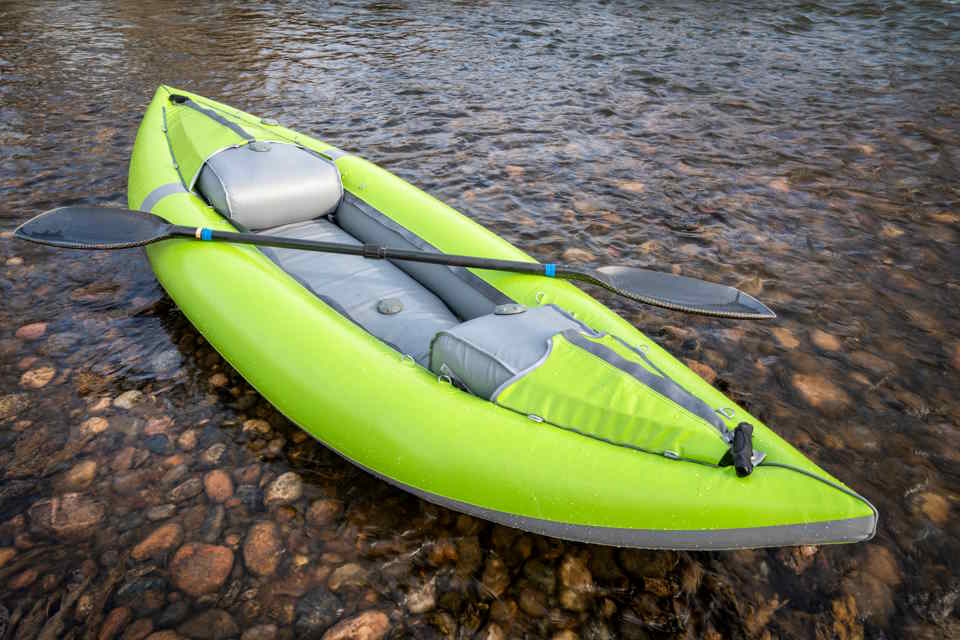Inflatable kayaks have become increasingly popular in recent times due to their favorable characteristics. Whether you are a seasoned kayaker or a beginner looking to explore waterways, inflatable kayaks have something to offer. However, there are still some questions that many people have about the reliability and durability of inflatable kayaks. We will look at the advantages and drawbacks of inflatable kayaks, whether they are good for use in the sea, how to maintain them, and more.

Introduction
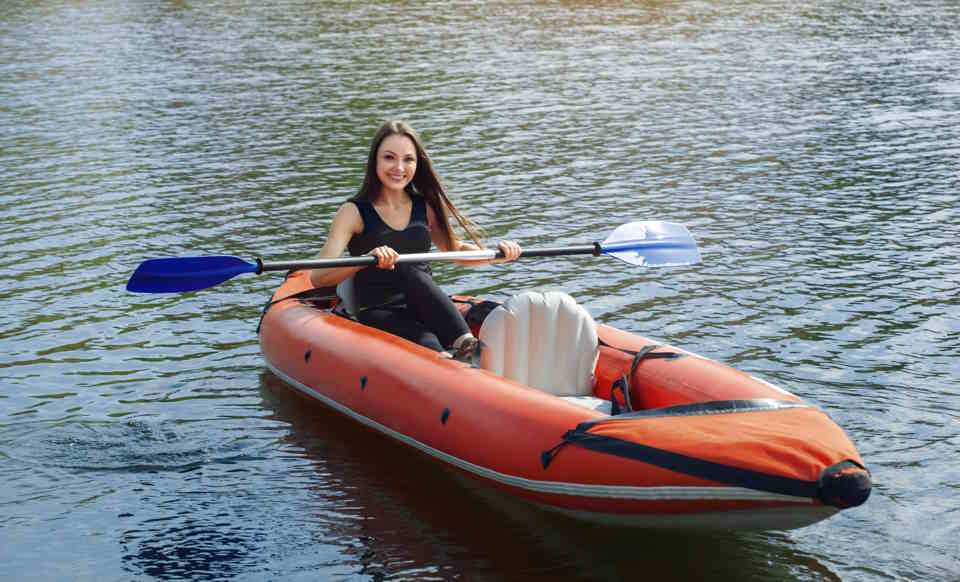
An inflatable kayak, as the name suggests, is a type of kayak that can be filled with air to make it rigid and buoyant. Inflatable kayaks are becoming increasingly popular as they offer several benefits over traditional kayaks. However, there are some concerns about their safety and durability, which we will discuss.
Advantages of Inflatable Kayaks:
- Portability: Inflatable kayaks are lightweight and can be easily packed into a bag, making them ideal for travel and storage.
- Easy to Store: Inflatable kayaks take up much less storage space than rigid kayaks, which can take up a lot of room in a garage or shed.
- Affordability: Inflatable kayaks are generally less expensive than rigid kayaks, making them accessible to a wider range of people.
- Stability: Inflatable kayaks have a wider base than traditional kayaks, making them more stable on the water.
Drawbacks of Inflatable Kayaks:
- Durability: While inflatable kayaks are made from durable materials, they are still more susceptible to punctures than rigid kayaks.
- Speed: Inflatable kayaks are generally slower than traditional kayaks due to their wider base and less streamlined design.
- Safety: While inflatable kayaks are generally safe, there is always a risk of puncture or deflation, which can be dangerous in certain situations.
Inflatable kayaks are a good option for those looking for a more portable and affordable alternative to traditional kayaks. However, it is important to consider the potential drawbacks and take proper safety precautions when using an inflatable kayak.
Should You Trust an Inflatable Kayak?

When it comes to choosing a kayak, many people wonder if they should trust an inflatable kayak. With advances in technology, inflatable kayaks have become a popular choice for many kayaking enthusiasts. However, there are pros and cons to using an inflatable kayak that you should consider before making your decision.
One advantage of an inflatable kayak is that it is much easier to transport and store. When deflated, it can fit into a backpack or small storage space, making it a great option for those who have limited space. Additionally, it is much lighter than a traditional kayak, which can make a big difference when you are carrying it to and from the water.
However, there are also some drawbacks to using an inflatable kayak. One of the main concerns is durability. While some inflatable kayaks are made with high-quality materials that are resistant to tears and punctures, others are more prone to damage. Additionally, it can be difficult to repair a hole in an inflatable kayak, which means you may need to replace the entire kayak if it becomes damaged.
- Another concern that many people have about inflatable kayaks is stability. While inflatable kayaks can be just as stable as traditional kayaks, they can also be more prone to tipping over in rough waters. This is because they don’t have the same level of rigidity as traditional kayaks, which can make them more difficult to control in choppy waters.
- Finally, it is important to consider the overall quality of the inflatable kayak before making your decision. There are many different brands and models to choose from, so it is important to do your research and find one that is reliable and durable.
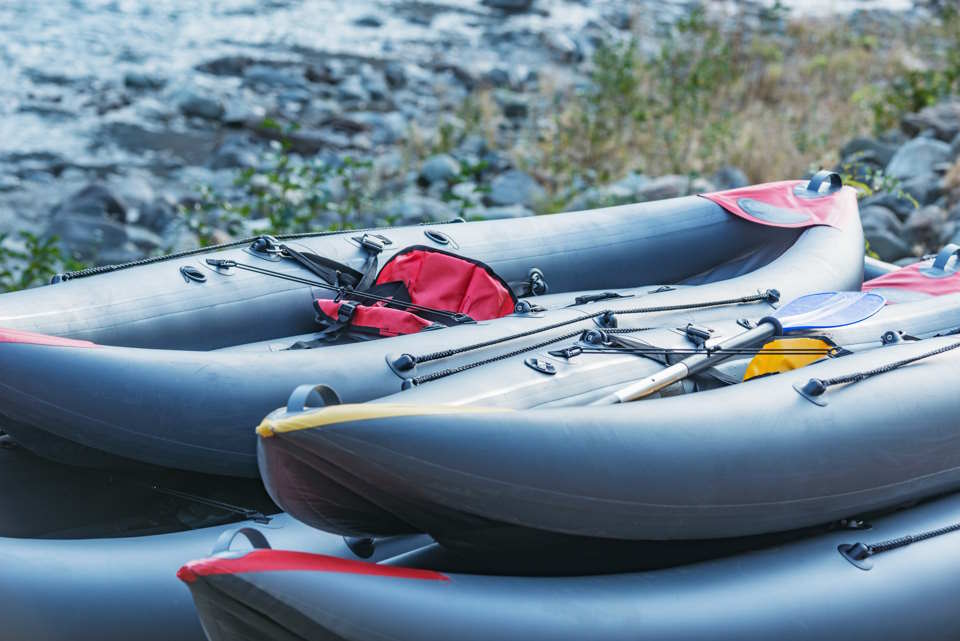
So, should you trust an inflatable kayak? It ultimately depends on your personal needs and preferences. If you are looking for a lightweight, portable option that is easy to transport and store, an inflatable kayak may be a great choice for you. However, if you plan on using your kayak in rough waters or need something that is extremely durable, a traditional kayak may be a better option.
| Inflatable Kayak Pros | Inflatable Kayak Cons |
|---|---|
| Easy to transport and store | Less durable than traditional kayaks |
| Lightweight | Less stable in rough waters |
| More affordable than traditional kayaks | Difficult to repair if punctured |
Ultimately, it is important to weigh the pros and cons of each type of kayak before making your decision. By doing your research and choosing a high-quality inflatable kayak, you can enjoy all the benefits of this versatile and convenient kayak option.
Are Inflatable Kayaks Ok in the Sea?

Inflatable kayaks have gained prominence in the kayaking industry in recent years as they provide a more convenient and affordable option for kayaking enthusiasts. However, many kayakers are skeptical about using inflatable kayaks in the sea. This is understandable as the sea can be unpredictable, and a kayak that is not designed for such conditions can be dangerous. We will examine whether inflatable kayaks are okay to use in the sea.
Firstly, it is important to note that not all inflatable kayaks are created equal. Some inflatable kayaks are designed specifically for use in calm waters like lakes and rivers. Therefore, it is imperative to choose an inflatable kayak that is designed for use in the sea. A sea-worthy kayak should be equipped with features like a water-resistant spray skirt, a high-pressure floor, and multiple air chambers for added safety.
- Water-resistant spray skirt: This feature ensures that the cockpit area stays dry even in choppy waters.
- High-pressure floor: This feature provides stability and sturdiness to the kayak, making it easier to maneuver through waves.
- Multiple air chambers: These provide added safety as in case one chamber gets punctured; the other chambers will keep the kayak afloat.
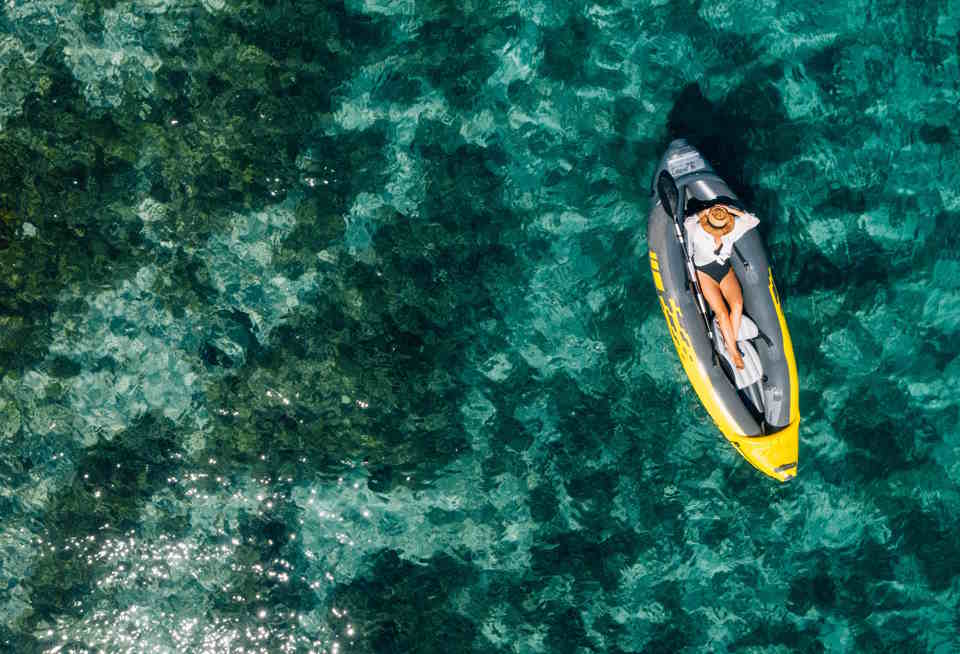
Secondly, inflatable kayaks can be used in the sea but not in all sea conditions. It is advisable to avoid using inflatable kayaks in rough seas or high winds as they may not be able to handle the conditions. However, in calm sea conditions, inflatable kayaks can be efficient and enjoyable to use. They are lightweight and portable, making them ideal for sea kayaking excursions. Additionally, they are easy to transport and store, making them convenient for kayakers who don’t have ample storage space.
Inflatable kayaks can be used in the sea, but it is essential to choose a kayak that is designed for such conditions. Also, it is crucial to be vigilant about the sea conditions and avoid using inflatable kayaks in rough seas or high winds. By following these precautions, inflatable kayaks can provide a fun and exciting kayaking experience in the sea at an affordable price.
Do Inflatable Kayaks Lose Air?

Inflatable kayaks have been around for a while now and have become popular among paddlers of all levels. They offer many benefits such as ease of use, portability, and affordability. However, one of the most common concerns that people have is whether these kayaks lose air and if so, how often and how much? We will look at some of the factors that can cause air loss in inflatable kayaks and how to prevent it from happening.
Factors that Cause Air Loss in Inflatable Kayaks
- Temperature Changes: One of the main factors that can cause air loss in inflatable kayaks is temperature changes. When the temperature changes, the air inside the kayak will expand or contract. This can cause the kayak to lose air or become overinflated. It is important to check the air pressure regularly and make necessary adjustments depending on the temperature.
- Damaged Valves: Another reason for air loss in inflatable kayaks is damaged valves. Over time, the valves can wear out or become damaged, causing air to leak out. It is important to inspect the valves regularly and replace them if necessary.
- Normal Wear and Tear: With regular use, inflatable kayaks can experience normal wear and tear, which can cause air loss. It is important to always store the kayak properly and avoid dragging it on rough surfaces.
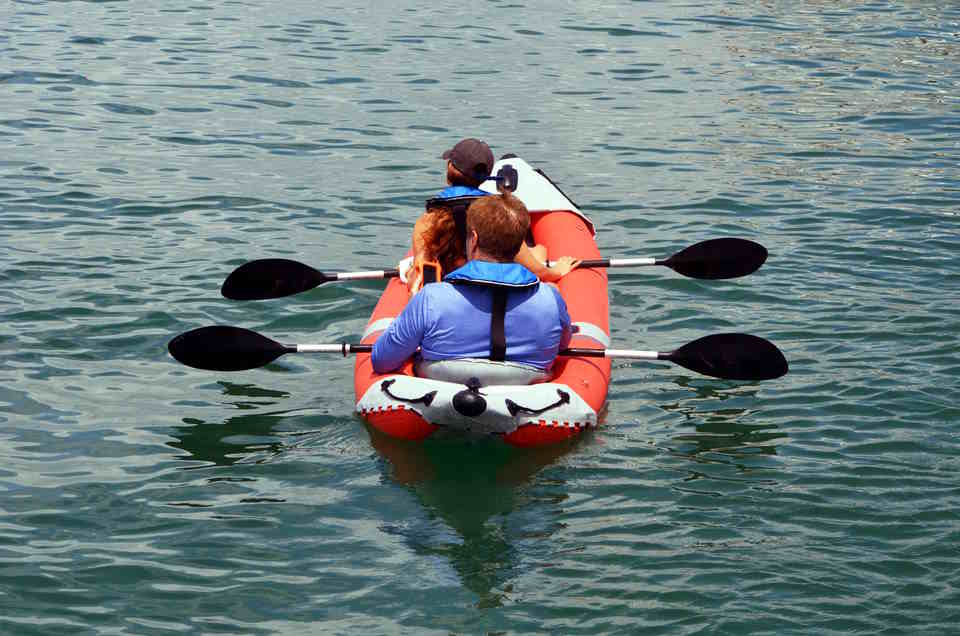
Preventing Air Loss in Inflatable Kayaks
| Prevention Techniques | Description |
|---|---|
| Properly Store the Kayak: | Store the kayak in a cool, dry place away from direct sunlight. Avoid storing it in areas with high humidity or extreme temperatures. |
| Regular Maintenance: | Inspect the kayak regularly for any signs of damage or wear and tear. Replace any damaged valves or other parts as needed. |
| Avoid Rough Surfaces: | Avoid dragging the kayak over rough or sharp surfaces, which can cause punctures and leaks. |
| Proper Inflation: | Make sure that the kayak is properly inflated to the recommended air pressure. Overinflation or underinflation can cause air loss. |
Inflatable kayaks can lose air over time due to various factors. However, with proper care and maintenance, air loss can be minimized. By taking the necessary steps to prevent air loss, you can enjoy paddling on your inflatable kayak for years to come.
Do Inflatable Kayaks Pop Easily?

If you are considering purchasing an inflatable kayak, one of the main concerns you may have is whether or not it will pop easily. The truth is, all kayaks – whether inflatable or hard-shelled – have the potential to pop or puncture. However, with proper care and maintenance, inflatable kayaks can be incredibly durable and resilient.
One of the biggest advantages of inflatable kayaks is that they are made with tough, puncture-resistant materials such as PVC and nylon. In addition, many inflatable kayaks come with multiple air chambers that provide an extra level of security in the event that one chamber is punctured. This means that even if one part of the kayak is damaged, the other chambers will keep the kayak afloat and prevent it from sinking.
However, there are certain precautions you can take to reduce the risk of punctures and keep your inflatable kayak in tip-top shape. Here are a few tips:
- Be sure to inspect your kayak for any signs of wear and tear before each use.
- Avoid paddling in shallow or rocky waters where the kayak is more likely to be damaged.
- Avoid overinflating the kayak, as this can put undue stress on the seams and cause them to weaken over time.

If you do experience a puncture or tear in your inflatable kayak, the good news is that many of these issues can be easily repaired with patch kits that are included with the kayak or sold separately. It is important to follow the instructions carefully when patching your kayak, as improper repairs can lead to further damage and potentially compromise the safety of the kayak.
| Pros | Cons |
|---|---|
| Lightweight and portable | May not perform as well as hard-shelled kayaks in rough or choppy waters |
| Easy to store and transport | May be more susceptible to punctures and tears |
| Offer a comfortable and stable ride | May require more maintenance and upkeep than hard-shelled kayaks |
While all kayaks have the potential to pop or puncture, inflatable kayaks can be just as durable and reliable as hard-shelled kayaks if they are properly cared for. By taking the right precautions and following the manufacturer’s instructions for repairs, you can enjoy years of fun and excitement on the water with your inflatable kayak.
What Is the Life Expectancy for Inflatable Kayak?

When looking to buy an inflatable kayak, one of the most common questions that come to mind is “what is the life expectancy for an inflatable kayak?” It’s a valid concern, as inflatables are often perceived as less durable than their hardshell counterparts. However, with proper care and maintenance, an inflatable kayak can last for many years.
Firstly, it’s important to consider the quality of the materials used in the construction of the kayak. Higher-quality, heavier-duty materials such as PVC or Hypalon will generally result in a longer lifespan than cheaper, thinner materials. Additionally, a well-made kayak that is properly cared for can last for up to 10 years or more.

Here are some tips to extend the life of your inflatable kayak:
- Store your kayak properly. Keep it out of direct sunlight and away from sharp objects or rough surfaces that could puncture the material.
- Clean your kayak after each use. Rinse it with fresh water and let it air dry before storing it. This will prevent any mold or mildew growth that could weaken the material over time.
- Check for leaks regularly. Inflate the kayak and listen for any hissing sounds or feel for any soft spots that may indicate a leak. If you do find a leak, make sure to patch it up as soon as possible.
Ultimately, the life expectancy of an inflatable kayak depends on several factors, including the quality of the materials, the level of care and maintenance, and how often it is used. With proper care and attention, your inflatable kayak can last for many enjoyable paddling adventures.

